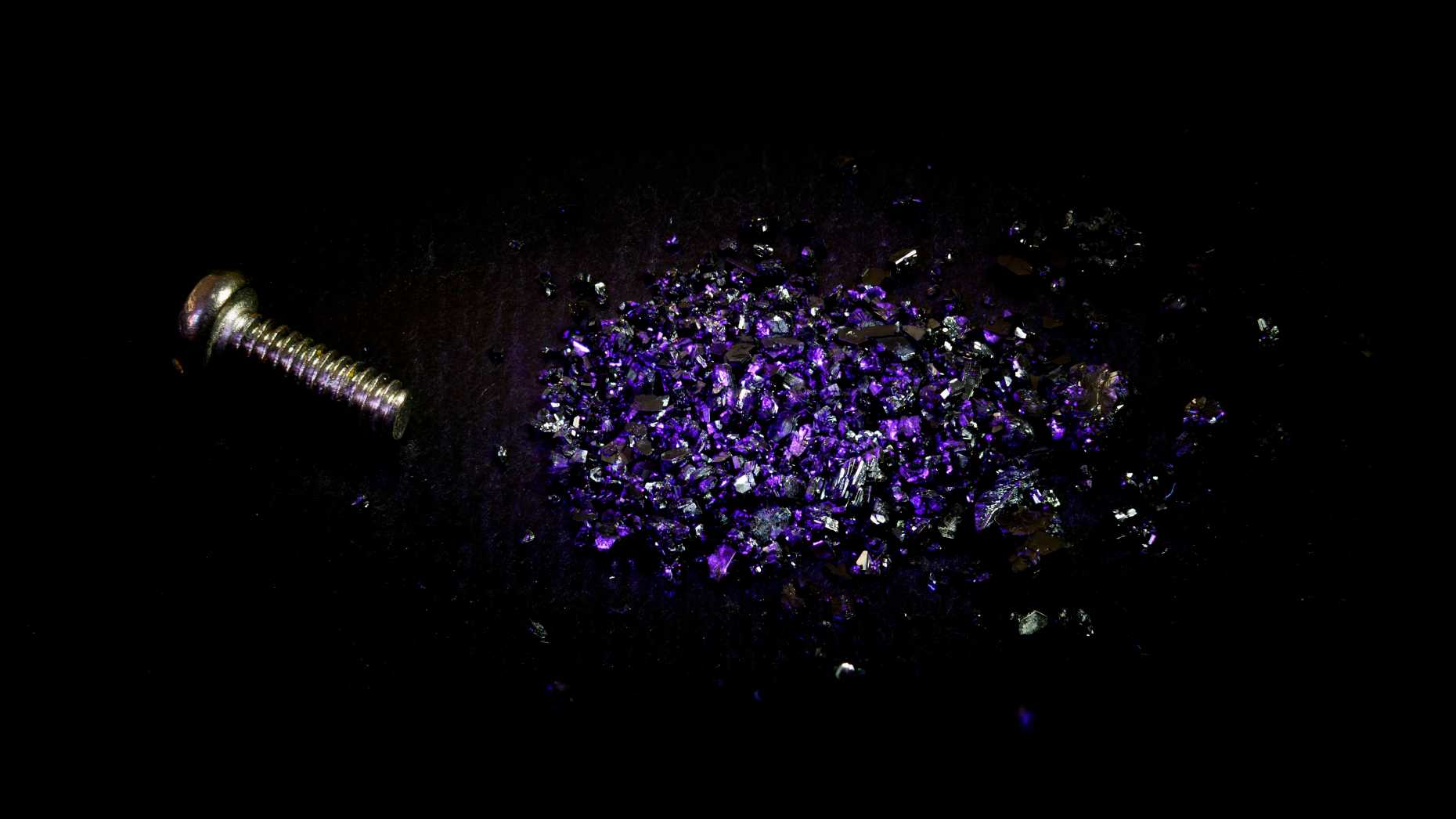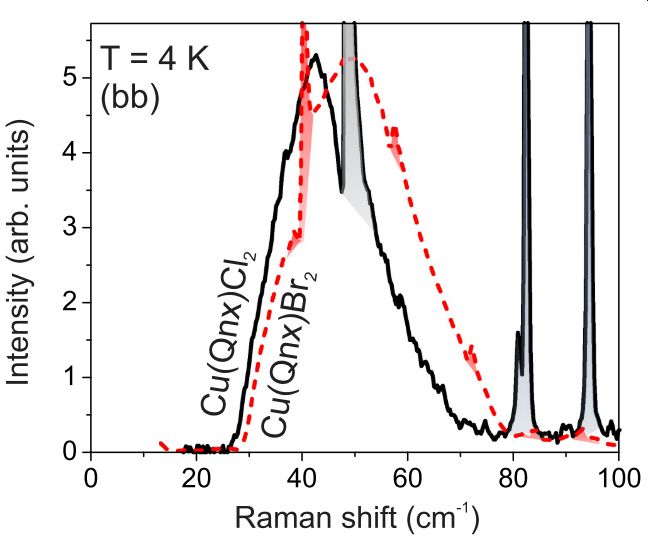CQX
Chemical formula:
Cu(C8H6N2)(Cl1-xBrx)2
Lattice type:
Monoclinic
How to grow:
Wet chemistry synthesis
Magnetic model:
S=1/2 spin ladder
Why is it cool:
A continuously tunable family of quantum spin ladders

The family of copper quinoxaline halides is a rare example of the spin ladder materials in which the continuous chemical substituition of chloride with bromide can be carries out without any structural transitions. The exchange constants are clearly changing as the result of it, but not dramatically. Basically, CQX ladders always stay close to the "isotropic" limit with nearly equal leg and rung exchanges. The smallness of crystals and somewhat large energy scale make CQX a difficult target for most experimental techniques, but that is just ideal for Raman scattering. A two-magnon continuum in a ladder can be observed with ease by light scattering, and tracing this continuum as function of composition confirms the continuous nature of exchange constants tuning.

G. Simutis, S. Gvasaliya, F. Xiao, C. P. Landee and A. Zheludev, Optical spin excitations in the tunable quantum spin ladder Cu(Qnx)(Cl1-xBrx)2;external page Phys. Rev. B 93, 094412 (2016); external page arXiv:1510.06360
K. Yu. Povarov, W. E. A. Lorenz, F. Xiao, C. P. Landee, Y. Krasnikova, A. Zheludev, The tunable quantum spin ladder Cu(Qnx)(Cl1-xBrx)2, external page JMMM 370, 62 (2014), external page arXiv:1402.2532
B. C. Keith, F. Xiao, Ch. P. Landee, M. M. Turnbull, A. Zheludev, Random exchange in the spin ladder Cu(quinoxaline)X2 (X = Cl, Br), external page Polyhedron 30, 3006 (2011)
